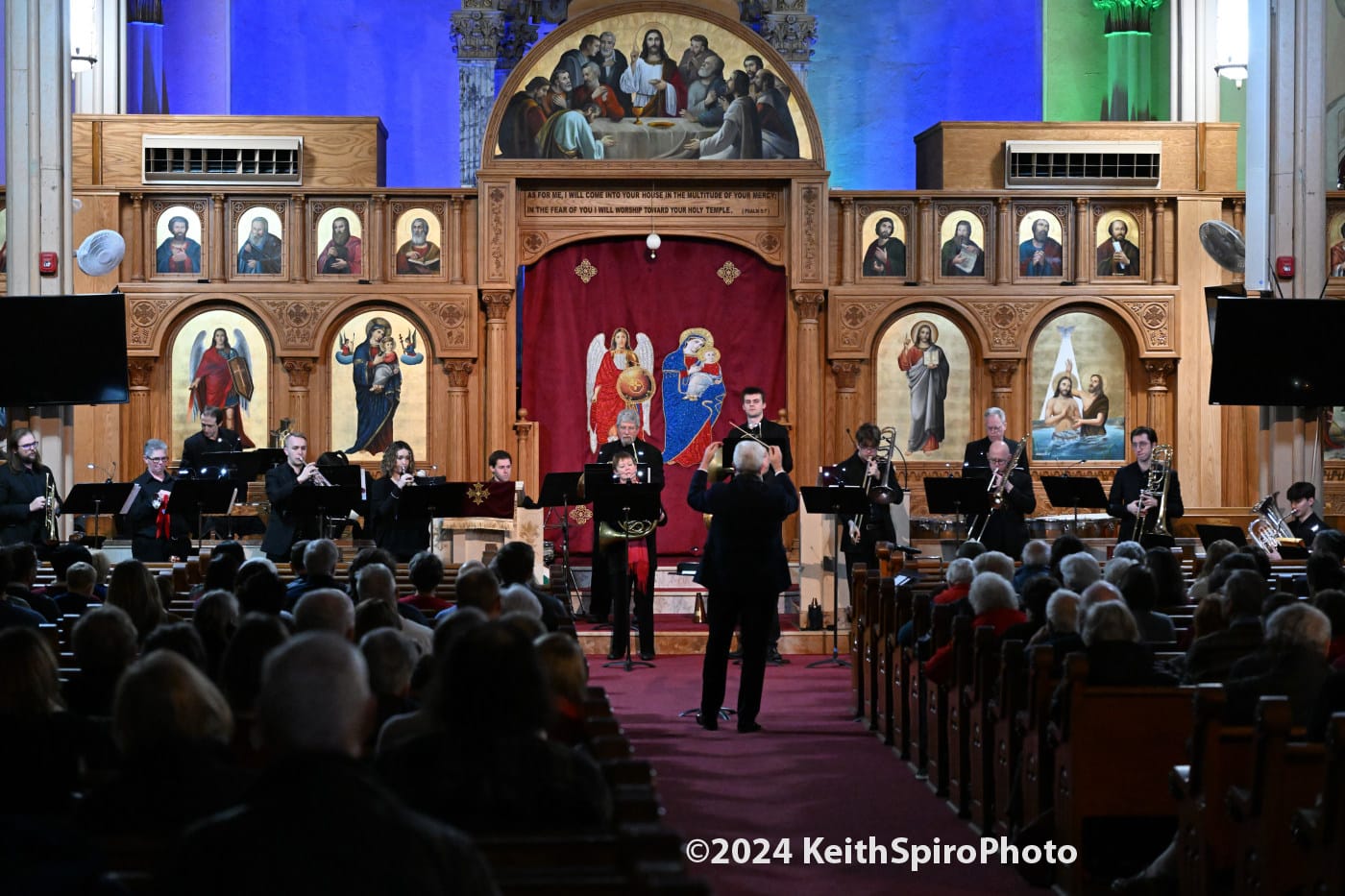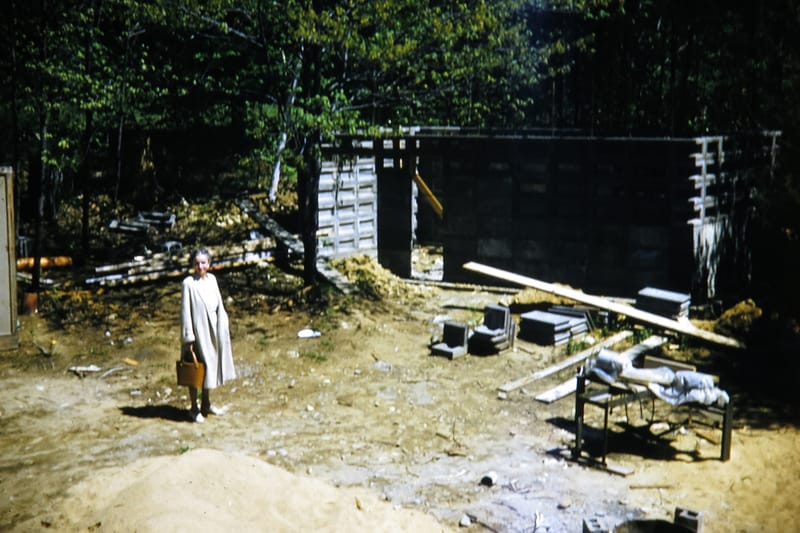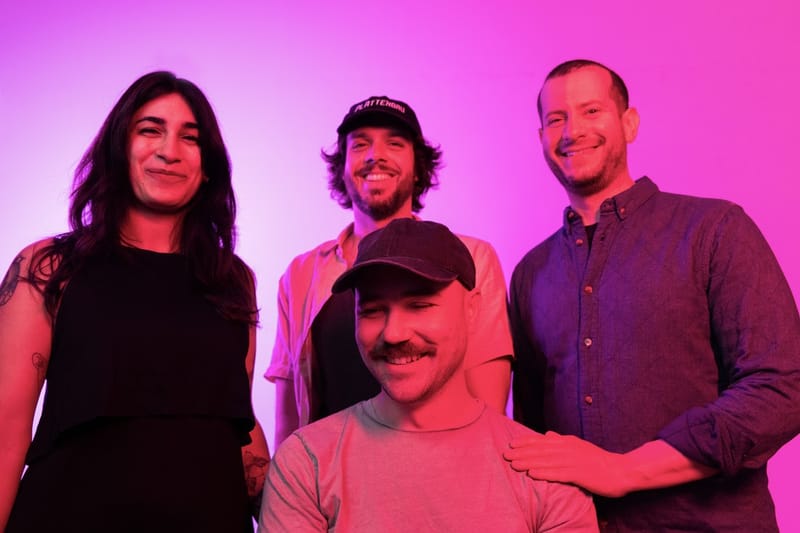A Tale of Two Holiday Brass Concerts
SymphonyNH performed their Holiday Brass concert in two locations this year. The program showcased the virtuosity of the brass section over the course of seven centuries of holiday music leading up to today’s most familiar melodies. Same program, but two dramatically different locations. The first

“When the show began, it felt as if you were in a church”
– InkLink Inkubator reporter at The Rex
“I did not have to close my eyes to imagine what it might have been like to listen to this music back in the 16th Century.”
– K Spiro at the Coptic Church performance.

SymphonyNH performed their Holiday Brass concert in two locations this year. The program showcased the virtuosity of the brass section over the course of seven centuries of holiday music leading up to today’s most familiar melodies. Same program, but two dramatically different locations. The first evening was held at the Rex Theatre in Manchester and the second, at the Coptic Church in Nashua.
TRY THIS QUICK COMPARISON
O Come All Ye Faithful (Adeste Fideles) is of unknown authorship but has been found in manuscripts dating back to the mid 1700s.
Click on each of the videos below. Listen to the snippets. Which do you prefer? Tell us why. Does venue impact your concert experience? Young or old, how do you react to modern and traditional holiday tunes?
REX THEATER HOSTED HOLIDAY BRASS
“When the show began, it felt as if you were In a church” said InkLInk Incubator’s writer T Harmon. She was reacting to O Magnum Mysterium as arranged by Andrew Bishop. Performed by Symphony NH at The Rex Theatre in Manchester it conveyed the depth of sound and mood as intended.
The first half was traditional and early pieces and the second half was filled with more modern tunes beginning with Bing Crosby’s (1943) “I’ll be home for Christmas.” The Rex is a versatile space that can transform in any imaginable way. Their digital backdrop projections have been amazing this season. Warren O’Reilly and his staff have upped the ante in setting the mood for any performance.
NASHUA’S COPTIC CHURCH ALSO HOSTED HOLIDAY BRASS

The same Holiday Brass musical program took place the very next night in Nashua in an actual church. St. Mary & Archangel Michael Coptic Orthodox Church is a Norman basilica-styled building built in 1898 to serve local French-speaking Catholic mill workers. The Norman influence dates back to the 11th and 12th centuries.
The building had been closed for a number of years before the Coptic Orthodox movement purchased the property in in 2008, got it listed on the NH State Register of Historic Places, and in 2017, received a $390,000 state grant to preserve the building from the NH Land Community Heritage and Investment Program (LCHIP).

The Coptic (derived from the Greek meaning Egyptian) Church was established in Alexandria Egypt around 43 A.D. and the interior of the building reflects their heritage. It is in this setting that the first half of the program shined. This stunning and majestic church was built for soaring sounds and reflective meditations. Here was the same first half of the program performed in a space that matched its origin in time and dignity with a spiritual connection.
Guest conductor David Upham shared tidbits of historical and musical perspectives between some of the pieces of the evening’s program.
HAUNTINGLY BEAUTIFUL ACOUSTICS
I did not have to close my eyes to imagine what it might have been like to listen to this music back in the 16th Century. The musical sound in the building pulsated as it might have back in a European Church in the Middle Ages and here, the hauntingly beautiful acoustics of this Nashua church rang true. You could see the resonance in the smiles on the faces of the musicians.

That first piece, O Magnum Mysterium, has its musical heritage in works by Giovanni Gabrieli (ca. 1557-1612.) Much of this period has become a staple in the repertoire for modern brass musicians and ensembles. Following immediately afterward was a 15th Century piece, O Come, O Come Emmanuel which echoed in a call and response between a trumpet in the back of the sanctuary and the rest of the ensemble in front of the pews.
The first half concluded with Il est né, le divin Enfant (English: He is born, the divine Child). A traditional French Christmas carol, published for the first time in 1862 by R. Grosjean, the organist of the Cathedral of Saint-Dié-des-Vosge.
TRY THE QUICK COMPARISON: Listen to each snippet
Do you have a preference and why?
Happy Holidays
Merry Christmas!






